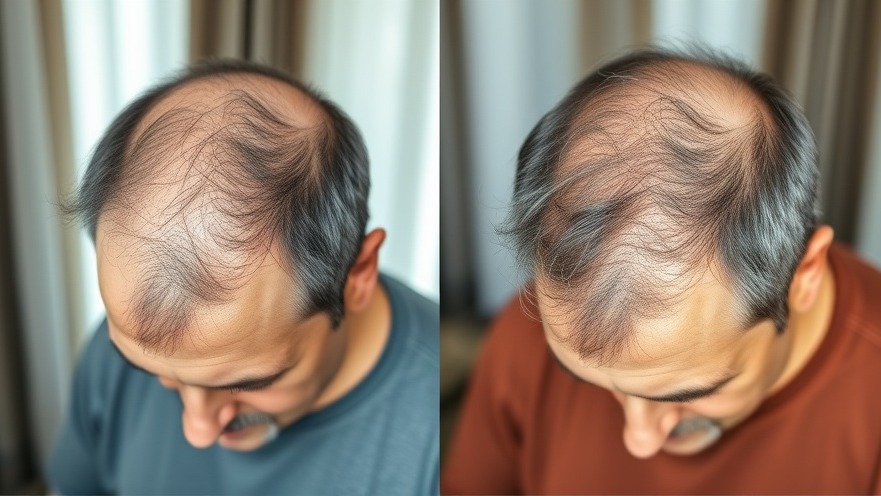
Understanding Male and Female Hair Loss
Hair loss is often seen as a rite of passage for many men and women, especially as they age. The phenomenon primarily manifests as androgenetic alopecia, which affects men and women differently. Men typically experience a receding hairline and thinning on the crown, while women tend to experience more diffuse thinning across the scalp. This pattern raises questions—why do some people lose hair in specific areas while others seemingly thrive? The mechanics of hair growth hinge heavily on the health of the hair follicle, the very area surrounding the hair shaft that contributes to its vitality.
In 'How to Reverse Hair Loss', the detailed look into hormonal influences and dietary interventions highlights essential strategies for maintaining hair health and encourages a deeper dive into these practices.
Decoding DHT and Its Role in Hair Loss
Dihydrotestosterone (DHT) is a crucial player in hair loss. This potent form of testosterone increases with age and can inhibit the hair growth cycle. For those experiencing hair loss, it's worth noting that an increase in DHT often correlates with lower oxygen supply and more scalp inflammation, which leads to the formation of scar tissue around hair follicles. Interestingly, while genetics play a role in DHT sensitivity, the primary driver is often linked to insulin resistance.
Reversing Hair Loss with Healthier Habits
It may be surprising to learn that insulin resistance is a significant factor contributing to increased DHT levels. When the body becomes less responsive to insulin, it affects organs, including the liver, that regulate hormone levels, resulting in higher DHT production. Therefore, addressing lifestyle factors that lead to insulin resistance—such as poor diet and lack of exercise—can serve as fundamental steps to reversing hair loss.
Strategies for Boosting Follicle Health
In pursuit of hair restoration, one effective, yet often-overlooked treatment is micro needling. This technique resembles gardening—just as the soil needs aeration for plants to flourish, our scalp requires stimulation to promote blood circulation and oxygen flow. Micro needling creates micro-injuries in the scalp, awakening dormant hair follicles and breaking down scar tissue.
The Power of Red and Near-Infrared Light Therapy
Alongside micro needling, light therapy is gaining popularity as another effective tool for reviving hair growth. Targeting wavelengths between 630 and 850 nm boosts mitochondrial function within hair follicle cells, optimizing energy production required for hair growth. This therapy has roots in various medical fields, notably in healing and regeneration.
Nutritious Meals for Optimal Hair Health
Diet plays a pivotal role in hair health. Incorporating nutrient-rich meals like liver, onions, sauerkraut, and pumpkin seeds can provide essential vitamins and minerals the body needs to stave off hair loss. Liver, for example, is a powerhouse of heme iron, which is vital for oxygen transport, while onions deliver quercetin—a strong anti-inflammatory compound. Moreover, integrating herbal supplements like rosemary oil into your routine can aid circulation and reduce DHT levels, complementing your biological approach toward healthier hair.
Conclusion: A Multi-faceted Approach to Hair Restoration
Understanding the intricate relationship between hormones, genetics, and environmental factors can empower those battling hair loss. By addressing insulin resistance, incorporating healthier habits, and utilizing innovative therapies, individuals can create a favorable environment for hair growth. For anyone looking to delve deeper into reversing health issues at the root level, consider exploring additional resources on managing insulin resistance for overall well-being.
 Add Element
Add Element  Add Row
Add Row 



Write A Comment